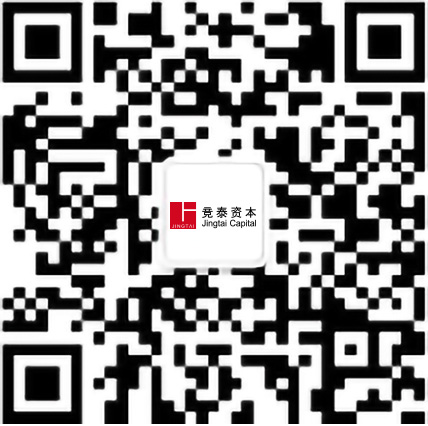
On the evening of March 21, NIO's 2024 annual report was announced, and from the perspective of core data, the annual revenue increased by 10 billion yuan to 65.7 billion yuan, becoming the highest revenue in history; Gross profit margin increased by 4.4 percentage points year-on-year to 9.9%, of which the gross profit margin of automobiles recorded 12.8%, an increase of 2.8 percentage points year-on-year.
From this point of view, this is a year in which NIO's revenue reached a record high and its gross profit improved year-on-year.
"Four Big Years" plan
2024 is a critical period of expansion for NIO. In addition to the expansion of the main brand, battery swap and service system, NIO has also launched two new brands, Ledao and Firefly. Although the multi-brand strategy has brought more market opportunities, it also means that the investment in R&D and channels has increased significantly. However, judging by the scale of sales in the first two months of this year, NIO seems to be facing the challenge of an imbalance between input and output.
This year, the new energy vehicle industry is accelerating the reshuffle, and all car companies are desperately trying to lock in market share. Whether NIO's large investment in R&D and service system can be successfully "realized" is directly related to the fate of this new power car company. Li Bin, chairman of NIO, reiterated at the results meeting the goal of doubling sales in 2025 and achieving profitability in the fourth quarter. His confidence comes from the "Four Big Years" plan: 2024 will be NIO's "Big Year for Products", "Big Year for Technology", "Big Year for Battery Swap Station Construction" and "Big Year for Internationalization".
In 2025, NIO's multi-line products and technologies will usher in a centralized landing: In terms of products: From April, the three brands of NIO, Ledao and Firefly will have a number of important models on the market.
In terms of technology, the full-blooded version of SkyOS, Tianshu's vehicle global operating system, intelligent driving chips, and end-to-end urban intelligent driving based on the world model will be delivered one after another. Battery swap network: The construction of battery swap stations will sprint to "county and county" to further expand coverage.
Internationalization: NIO plans to expand into 25 overseas markets to drive global growth. If the "Four Great Years" plan can be successfully realized, NIO is expected to occupy a more important position in the new energy vehicle market.
Swing a knife and slash at the current accumulation
NIO's Ledao brand has begun to solve various problems in a big way, especially in brand marketing, sales network and battery swap facilities. During the Spring Festival this year, Ledao increased its investment in brand marketing, such as placing focus advertisements in high-speed rail stations and elevators in residential areas to enhance brand awareness; At the same time, we have increased investment in our sales network and personnel training, and expanded the number of battery swap stations that are compatible with Rado models.
On the sales side, Li Bin, chairman of NIO, is exploring a new internal incentive system for the sales teams of the two brands, NIO and Ledao, to promote each other's cars. At present, this pilot has been launched in some stores. In addition, the problem of insufficient battery supply for Ledao models has also been solved, and the number of battery swap stations that can be compatible with Ledao has now exceeded 1,500.
These aggressive enhancements are already beginning to bear fruit. Li Bin revealed that at present, the sales volume of Ledao in 12 sales regions has surpassed that of NIO, and Ledao's L60 model has also become the product with the highest user satisfaction within the company.
To achieve profitability, cost reduction is an important link
Jingtai believes that NIO's efforts to reduce costs and increase efficiency are gradually showing results. Qu Yu, CFO of NIO, revealed that since last year, the company has implemented a series of cost reduction measures, especially in improving the generalization rate of vehicle parts. For example, NIO and the Ledao brand share a seat frame platform, which reduces costs by 10%; The unification of intelligent hardware interfaces reduces the cost of each vehicle from 2,000 yuan to 1,000 yuan; The self-developed Shenji intelligent driving chip saves 10,000 yuan in cost compared with the four Orin chips used before.
Qu Yu said that through these measures, NIO has achieved a 10% reduction in the cost of the BOM (bill of materials) of the whole vehicle in 2024. This not only frees up a key gross profit safety cushion for NIO and Ledao brands, but also gives the company more confidence to deal with the unpredictable price war in the market. Li Bin, chairman of NIO, also mentioned that these effects of reducing costs and increasing efficiency will be reflected in the financial report of the second quarter. Qu Yu further added that in the fourth quarter of this year, the gross profit margin of NIO and Ledao brands will sprint to 20% and 15% respectively, laying the foundation for turning losses into profits in the fourth quarter.
NIO's cost reduction measures convey several important messages: Cost control capability improvement: Through the generalization of parts, the unification of hardware interfaces, and self-developed chips, NIO has demonstrated strong cost control capabilities. Expanded gross profit margin: Cost reduction measures have freed up more gross profit space for NIO and Ledao brands, enhancing resilience to price wars.
NIO's cost-cutting and efficiency-enhancing strategy is paving the way for its profitability to improve. Investors can pay attention to the performance of its second-quarter earnings report, as well as the progress of improving gross margin in the fourth quarter. After all, in the "marathon" of new energy vehicles, cost control and profitability are the key factors that determine the outcome of the game.





